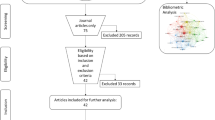Abstract
In a worldwide network of suppliers, factories, warehouses, distribution centres and retailers, the supply chain plays a very important role in the acquisition, transformation, and delivery of raw materials and products. One of the most important characteristics of agile supply chain is the ability to reconfigure dynamically and quickly according to demand changes in the market. In this paper, concepts and characteristics of an agile supply chain are discussed and the agile supply chain is regarded as one of the pivotal technologies of agile manufacture based on dynamic alliance. Also, the importance of coordination in supply chain is emphasised and a general architecture of agile supply chain management is presented based on a multi-agent theory, in which the supply chain is managed by a set of intelligent agents for one or more activities. The supply chain management system functions are to coordinate its agents. Agent functionalities and responsibilities are defined respectively, and a contract net protocol joint with case-based reasoning for coordination and an algorithm for task allocation is presented.




Similar content being viewed by others
References
Goldman S, Nagel R, Preiss K (1995) Agile competitors and virtual organization. Van Nostrsand Reinhold, New York, pp 23–32, pp 158–166
Yusuf YY, Sarhadi M, Gunasekaran A (1999) Agile manufacturing: the drivers, concepts and attributes. Int J Prod Eng 62:33–43
Gunasekaran A (1999) Agile manufacturing: A framework for research and development. Int J Prod Eng 62:87–105
Fox MS, Chionglo JF, Barbuceanu M (1992) Integrated chain management system. Technical report, Enterprise Integration Laboratory, University of Toronto
Shen W, Ulieru M, Norrie DH, Kremer R (1999) Implementing the internet enabled supply chain through a collaborative agent system. In: Proceedings of agents ‘99 workshop on agent-based decision support for managing the internet-enabled supply-chain, Seattle, pp 55–62
Sandholm TW, Lesser VR (1995) On automated contracting in multi-enterprise manufacturing. Advanced Systems and Tools, Edinburgh, Scotland, pp 33–42
Beck JC, Fox MS (1994) Supply chain coordination via mediated constraint relaxation. In: Proceedings of the first Canadian workshop on distributed artificial intelligence, Banff, Alberta, 15 May 1994
Chen Y, Peng Y, Finin T, Labrou Y, Cost R, Chu B, Sun R, Willhelm R (1999) A negotiation-based multi-agent system for supply chain management. In: Working notes of the ACM autonomous agents workshop on agent-based decision-support for managing the internet-enabled supply-chain, 4:1–7
Wooldridge M, Jennings NR (1995) Intelligent agents: theory and practice. Knowl Eng Rev 10(2):115–152
Barbuceanu M, Fox MS (1997) The design of a coordination language for multi-agent systems. In: Muller JP, Wooldridge MJ, Jennings NR (eds) Intelligent agent III: agents theories, architecture and languanges (Lecture notes in artificial intelligence), Springer, Berlin Heidelberg New York, pp 341–357
Hal L, Padmanabhan V, Whang S (1997) The Bullwhip effect in supply chains. Sloan Manag Rev 38(4):93–102
Yung S, Yang C (1999) A new approach to solve supply chain management problem by integrating multi-agent technology and constraint network. HICASS-32
Yan Y, Yen J, Bui T (2000) A multi-agent based negotiation support system for distributed transmission cost allocation. HICASS-33
Nwana H (1996) Software agents: an overview. Knowl Eng Rev 11(3):1–40
Smith RG (1980) Contract net protocol: high-level communication and control in a distributed problem solver. IEEE Trans Comput 29(12):1104–1113
Barbuceanu M, Fox MS (1996) Coordinating multiple agents in the supply chain. In: Proceedings of the fifth workshop on enabling technology for collaborative enterprises (WET ICE’96). IEEE Computer Society Press, pp 134–141
Jennings NR, Faratin P, Norman TJ, O’Brien P, Odgers B (2000) Autonomous agents for business process management. Int J Appl Artif Intell 14(2):145–18
Malone TW, Crowston K (1991) Toward an interdisciplinary theory of coordination. Center for coordination science technical report 120, MIT Sloan School
Acknowledgement
The authors would like to acknowledge the funding support from the National Science Fund Committee (NSFC) of China (Grant No. 5991076861).
Author information
Authors and Affiliations
Corresponding author
Rights and permissions
About this article
Cite this article
Lou, P., Zhou, Zd., Chen, YP. et al. Study on multi-agent-based agile supply chain management. Int J Adv Manuf Technol 23, 197–203 (2004). https://doi.org/10.1007/s00170-003-1626-x
Received:
Accepted:
Published:
Issue Date:
DOI: https://doi.org/10.1007/s00170-003-1626-x




